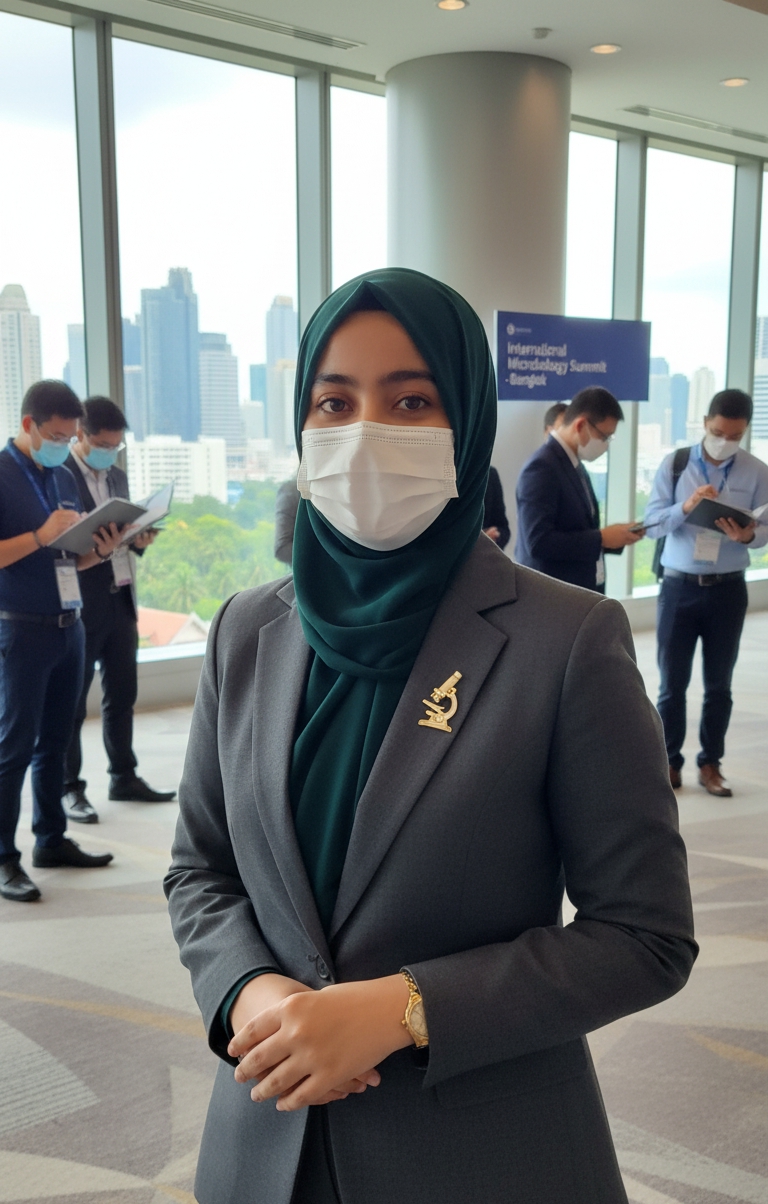SDGS GOAL 6: CLEAN WATER AND SANITATION Role of Algae and Microbial Processes in Wastewater Treatment
INTRODUCTION:
Wastewater treatment is traditionally dominated by microbial processes, primarily involving bacteria, which help degrade organic pollutants. However, the integration of algae, especially microalgae, into wastewater treatment systems has emerged as a sustainable and innovative alternative that offers dual benefits: water purification and biofuel production. Together, algae and microorganisms form a symbiotic relationship that enhances nutrient removal, reduces pollution, and creates valuable byproducts like biodiesel.

Microbial Processes in Wastewater Treatment
Microorganisms are essential in the biological treatment of wastewater. Their primary function is to degrade organic matter, reduce biochemical oxygen demand (BOD) and chemical oxygen demand (COD), and neutralize harmful pathogens.
- Aerobic Bacteria: These bacteria require oxygen to survive and are commonly used in activated sludge systems and trickling filters. They consume organic pollutants and convert them into carbon dioxide, water, and more biomass. Aerobic processes are effective in reducing BOD and are widely used in municipal treatment plants.

- Anaerobic Bacteria: Functioning in oxygen-free environments, these bacteria are utilized in processes like anaerobic digestion. They break down complex organic materials into simpler compounds, producing methane-rich biogasas a byproduct. Anaerobic treatment is energy-efficient and often used for high-strength industrial wastewater.
- Facultative Microorganisms: These organisms can function in both aerobic and anaerobic conditions. They are often used in stabilization ponds or lagoons, contributing to the breakdown of organic matter over longer periods.
Microbial communities play a vital role in nutrient cycling, including the transformation of nitrogen (nitrification and DE nitrification) and phosphorus removal, helping to reduce the environmental impact of discharged wastewater.
The Role of Algae in Wastewater Treatment
Microalgae are photosynthetic organisms capable of converting sunlight, carbon dioxide, and nutrients into biomass. When cultivated in wastewater, they act as natural bio-remediates by removing pollutants and simultaneously producing lipid-rich biomass suitable for biodiesel production.
1. Nutrient Removal
Microalgae are highly efficient in removing nitrogen and phosphorus—two major contributors to water pollution and eutrophication. They assimilate these nutrients into their biomass during growth, effectively reducing nutrient loads in wastewater.
- Ammonium, nitrate, and phosphateare taken up rapidly by species like Chlorella, Scenedesmus, and Nannochloropsis.
- This helps prevent algal blooms in natural water bodies when treated water is released into the environment.
2. Heavy Metal and Toxin Absorption
Certain algae have the ability to absorb or adsorb heavy metals and toxic compounds, such as lead, cadmium, arsenic, and even pharmaceuticals. This makes them suitable for treating industrial effluents and improving the safety of reused water.
3. Oxygen Production and CO₂ Sequestration
Through photosynthesis, algae release oxygen into the water, supporting the aerobic microbial communities that degrade organic matter. Additionally, they absorb carbon dioxide, reducing greenhouse gas emissions and contributing to carbon capture.
4. Biomass Generation for Biodiesel
One of the most compelling reasons to use algae in wastewater treatment is their ability to produce large amounts of lipids, which can be extracted and converted into biodiesel. Algae like Chlorella vulgaris can contain up to 50% oil content under certain stress conditions, making them a high-yield, non-food biofuel source.
Algae-Bacteria Symbiosis
In integrated systems, algae and bacteria work synergistically:
- Algae supply oxygento bacteria via photosynthesis, reducing the need for artificial aeration—a major energy expense in traditional wastewater treatment.
- In return, bacteria release carbon dioxide and nutrients, which algae need to grow. This natural exchange supports the simultaneous breakdown of organic matter and nutrient uptake, improving treatment efficiency.
Such systems can be found in high-rate algal ponds (HRAPs), which are shallow, open raceway ponds where wastewater is circulated and exposed to sunlight. These systems are low-cost, effective, and well-suited to warm climates with abundant sunlight.
 Benefits and Sustainability
Benefits and Sustainability
- Low Energy Demand: The photosynthetic oxygen produced by algae reduces the need for mechanical aeration.
- Resource Recovery: The algal biomass generated can be harvested and processed into biofuels, fertilizers, or animal feed.
- Carbon Neutrality: The system contributes to CO₂ mitigation, aligning with global efforts to combat climate change.
Scalability and Adaptability: Algae-based systems can be adapted to small communities or scaled up for industrial applications, particularly where land and sunlight are available.
The integration of algae and microbial processes in wastewater treatment represents a forward-thinking, sustainable approach to environmental management. By harnessing the natural abilities of microalgae and bacteria, we can not only purify polluted water but also generate renewable energy in the form of biodiesel. This dual-function system offers a promising solution to global challenges related to water, waste, and energy—transforming what was once a liability into a valuable resource.
Algae-Based Biodiesel Production:
Algae-based biodiesel production has emerged as a promising and sustainable alternative to traditional biofuels, as algae are capable of producing large amounts of oil that can be converted into biodiesel. This process offers multiple advantages, particularly in utilizing wastewater as a cultivation medium, which not only provides nutrients for algae growth but also helps in wastewater treatment. The overall process of algae-based biodiesel production includes algae cultivation in wastewater, lipid extraction, and transesterification to convert the extracted lipids into biodiesel.
Algae Cultivation in Wastewater:
Algae are photosynthetic organisms that can grow in various environments, including wastewater. Wastewater, especially from agricultural, industrial, or municipal sources, often contains high concentrations of nutrients such as nitrogen and phosphorus, which are vital for algae growth. These nutrients are typically pollutants in the environment, but algae can effectively utilize them for growth, thereby contributing to wastewater treatment.
There are two main methods of cultivating algae in wastewater: open ponds and photobioreactors. Open ponds are large, shallow pools where algae grow naturally under sunlight. While this method is relatively low-cost and simple, it has some drawbacks, such as contamination from unwanted species and inefficient nutrient utilization. On the other hand, photobioreactors are closed systems that provide a controlled environment for algae cultivation. These systems are more efficient in terms of nutrient utilization and are less susceptible to contamination, but they are more expensive to build and operate.
Algae species such as Chlorella, Spirulina, and Scenedesmus are commonly cultivated for biodiesel production due to their high lipid content and adaptability to various environmental conditions. In wastewater, algae can rapidly grow and accumulate lipids, making them an ideal feedstock for biodiesel production. Additionally, algae help mitigate environmental pollution by absorbing excess nutrients, thus reducing eutrophication in water bodies.
Lipid Extraction:
Once algae have been cultivated in wastewater and reached a sufficient biomass, the next step is to extract the lipids (fats and oils) present in their cells. Algae can accumulate large quantities of lipids, often between 20% and 50% of their dry weight, which can be extracted using various methods:
- Mechanical Extraction:This method involves physically breaking open the algae cells to release the oils. It can be done through processes like pressing or grinding. However, this method is typically less efficient and requires pre-treatment of the algae to make the oils more accessible.
- Solvent Extraction:A more common and efficient method, solvent extraction uses organic solvents like hexane to dissolve the oils from the algae biomass. The solvent is then evaporated, leaving behind the extracted oil. This method is effective but requires careful handling of solvents and energy consumption.
- Supercritical Fluid Extraction:This method involves the use of supercritical CO2 to extract oils from algae. It is highly efficient and environmentally friendly, as it avoids the use of toxic solvents, but it is also expensive due to the high equipment costs.
- Enzymatic Extraction:This is a newer and more eco-friendly technique that uses enzymes to break down the cell walls of algae and release the oils. It is considered to be a gentler process but is still under development for large-scale use.
Trans esterification:
After lipid extraction, the next step is trans esterification, the chemical process used to convert the extracted oils into biodiesel. Trans esterification involves reacting the lipids (triglycerides) with an alcohol (usually methanol or ethanol) in the presence of a catalyst (typically sodium hydroxide or potassium hydroxide). This reaction produces biodiesel (methyl or ethyl esters) and glycerol as a byproduct.
The basic reaction can be written as:
Triglyceride + Alcohol → Biodiesel + Glycerol
The biodiesel produced can be used as a substitute for conventional diesel fuel in engines, while glycerol is a valuable byproduct that can be further refined for use in cosmetics, pharmaceuticals, and other industries.
The trans esterification process is crucial for ensuring the quality of the biodiesel. Parameters such as temperature, alcohol-to-oil ratio, and catalyst concentration need to be optimized to maximize biodiesel yield and quality. After the reaction, the biodiesel is separated from the glycerol, purified, and tested for properties such as viscosity, flash point, and energy content to ensure it meets biodiesel standards.
Advantages and Challenges:
Advantages:
- Sustainability:Algae are a renewable and non-competitive source of biofuels that do not require arable land or freshwater, unlike conventional crops used for biodiesel.
- Wastewater Treatment:Algae cultivation in wastewater helps in nutrient removal, mitigating the environmental impact of wastewater discharge.
- High Oil Yield:Algae have the potential to produce more oil per hectare compared to traditional biofuel crops like soybeans or palm oil.
Challenges:
- High Production Costs:Cultivating algae and extracting lipids can be expensive, particularly when using advanced systems like photo bioreactors or supercritical extraction.
- Scalability:While small-scale algae cultivation is promising, scaling up to commercial levels remains a technical and economic challenge.
- Energy Efficiency:The energy required for algae cultivation, harvesting, and lipid extraction needs to be minimized to ensure the process remains environmentally and economically viable.
algae-based biodiesel production from wastewater is a promising and sustainable method of generating renewable energy while simultaneously addressing environmental concerns. Although there are challenges related to cost and scalability, ongoing research and technological advancements are likely to improve the efficiency and commercial viability of this approach.
production from wastewater is a promising and sustainable method of generating renewable energy while simultaneously addressing environmental concerns. Although there are challenges related to cost and scalability, ongoing research and technological advancements are likely to improve the efficiency and commercial viability of this approach.
Author
-

Qurat-ul-Ain is a multifaceted leader, Microbiologist, and CEO of Q Art Studio, blending science and art to drive social change.
-
Leadership: National Youth Leader (IIPL) and Ambassador for the International Diplomat Conference 2025.
-
Science & Literature: Researcher with 15+ articles, Medical Book Editor, and published poet/author.
-
Key Engagements: Speaker at ANSO-PAS, AASA-PAS, and NEXUS Summit LUMS on climate and leadership.
-
Awards: Recipient of the Peace Ambassador Award (Azerbaijan), SDGs National Award, and 100 Young Influencers recognition.
-
Mission: A motivational speaker and counselor dedicated to empowering women, promoting education, and pursuing advanced microbial research.
-

